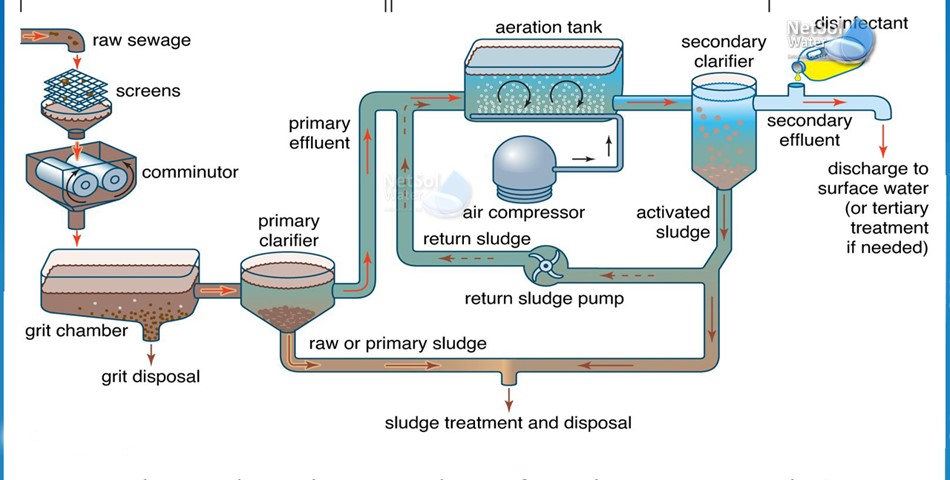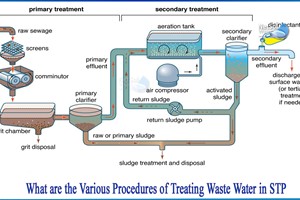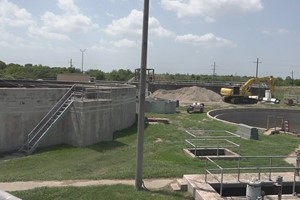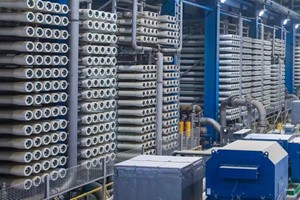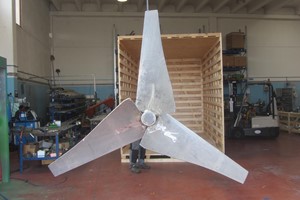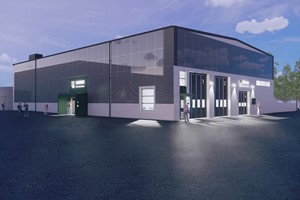Sewage treatment (also known as domestic wastewater treatment or municipal wastewater treatment) is a type of wastewater treatment that aims to remove contaminants from sewage to produce effluent suitable for discharge to the surrounding environment or reuse, thereby preventing water pollution from raw sewage discharges.
The overall goal of sewage treatment is to produce effluent that can be discharged to the environment with as little water pollution as possible, or to produce effluent that can be reused in a useful manner. If wastewater is disposed of as domestic, municipal, or professional waste, it can harm the environment and should be treated in sewage treatment plant.
The entire process of wastewater therapy is the removal of contaminants from wastewater both in residential and industrial wastes to make the sound and liquid waste harmless for disposal to the environment or aimed for reuse. There are several distinct wastewater treatment plants that can be divided into three groups: actual physical, chemical, and biological procedures. The overall total of wastewater contamination plus the contaminants discovered will determine which of the processes should be used.
Various procedures of treating waste water in sewage treatment plant:
Physical procedures: Sedimentation, aeration, and filtration are all part of wastewater physical therapy. Sedimentation is the removal of contaminating elements after the solids settle to the bottom. As long as the large solids remain at the bottom, the discharge and clearing of liquid effluents will be a breeze. Sedimentation is one of the most well-liked approaches, and it is typically used at the start and finish of water treatment procedures. Aeration is the physical addition of air to wastewater to ensure that oxygen is supplied to your contaminated water. Filtration may have separated the contaminating solids in the liquid as it passed through different filters. In this process, the sand filter is the most commonly used filter. The floating solids on the surface of the wastewater are skimmed off and physically removed.
Biological or organic procedures: The treatment objectives for biological sewage treatment can include varying degrees of the following: transforming dissolved and particulate biodegradable components (particularly organic matter) into acceptable end products, transforming and removing nutrients (nitrogen and phosphorus), removing or inactivating pathogenic organisms, and removing specific trace organic constituents (micropollutants).
The organic procedure in sewage treatment vegetation employs microorganisms and a variety of other microorganisms to biochemically decompose and stabilize the wastewater.
There are two types of organic procedures: aerobic and anaerobic. During the aerobic system, which contains O2, the germs consume natural and organic matter, which is then converted to carbon dioxide. Without the presence of oxygen, the sludge is fermented at a specific temperature during the anaerobic procedure. It is critical that wastewater be treated prior to being disposed of for the environment to avoid contamination with the bodies of drinking water where it will be disposed of as well as to manage the spread of disease that can harm people. Furthermore, if the proper treatment method is used, wastewater can be reused for beneficial purposes such as irrigation.
Chemical procedures: Chemical treatment of wastewater employs the use of chemicals to eliminate the presence of contaminants. Chlorination is thought to be the most commonly used chemical treatment. Chlorine, a powerful oxidizing chemical, kills the germs that cause water decomposition. Oxidation is a type of chemical treatment in which oxidizing agents such as ozone are used to treat contaminated water. By oxidizing the liquid, it is possible to make the water reusable by controlling the biological development of microorganisms, which is the primary cause of drinking water decomposition.
Neutralization could be the chemical system used in wastewater industrial procedures. This includes the addition of foundation or acid to the drinking water to adjust the pH level to its neutral point.
Phase 1 – Primary treatment
There are three steps that are involved in the primary treatment of sewage:
Step 1: Removal of larger wastes materials
This is done using a bar screen. These larger waste materials get collected on one side as water is passed through this bar screen.
Step 2: Removal of impurities like sand or pebbles or grit which are present in the wastewater.
This is done by passing the water very slowly in a large grit and sand removal tank. Here, the reduced speed of the incoming water helps the smaller particles like sand and grit settle at the bottom.
Step 3: The next step is where other impurities are allowed to settle down at the bottom.
This is done by passing the water in the primary clarifier. It is a tank in which the wastewater is allowed to stand still for a few hours. This helps in separating the impurities that settle at the bottom of the tank. The settled impurities are collectively referred to as Sludge.
Along with impurities, the sludge contains many compounds and nutrients. These are of no use to us, but they can prove very useful for a specific type of bacteria. The anaerobic bacteria which carry out fermentation reactions are fed with the sludge. As a result, they carry out the fermentation process which forms Biogas. This important product can then be used further for various applications.



